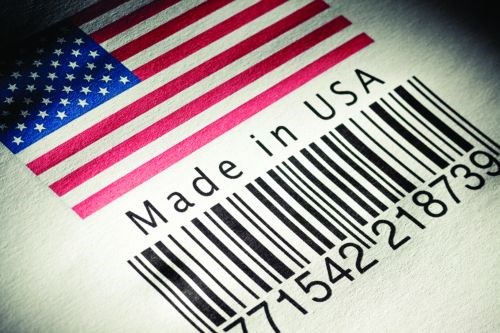Moving from a Trickle to a Trend
I came across an article sharing a simple plan for how to propel the reshoring trend forward ... some very familiar concepts: (1) A more educated workforce to fill skilled labor gaps, and more Americans interested in careers in manufacturing at all levels; (2) More extensive use of automated assembly processes to limit the labor input of production; and (3) Tools to help companies evaluate their true total cost of ownership (TCO) when offshoring to model all costs and risks. It does seem like reshoring is getting a lot of play nowadays ... but I'm not complaining ... it's a good thing!

When working with Harry Moser to organize our How to Bring Manufacturing Back panel for last month's amerimold expo, we wanted the panel to focus on actual case study examples of companies that have successfully reshored or companies that have been positively affected by a customer that has reshored. We quickly discovered a handful of great companies to pursue, but also quickly found out that they weren't so interested in talking about it ... yet. Now although the panel turned out great giving attendees very valuable information shared by Harry and Steve DeHoff of Stress Engineering on the real benefits of reshoring as well as the real cost of NOT reshoring, I'm on a mission now to get those companies to work with us on next year's event. But in the meantime, we will be examining such stories in MoldMaking Technology magazine ... one such company is ready to share! If you are interested in telling your story or working with us on next year's event reach out to me.
On a related note, I came across an interesting article on this subject that highlights three companies that made it happen: the company that makes the Jaws of Life, a giant appliance-maker and a manufacturer of audio-visual mounts. This same piece suggests a simple plan for how to propel the reshoring trend forward ... some very familiar concepts: "These examples are encouraging for those in favor of domestic manufacturing, but reshoring has yet to move from a trickle to a trend. Here are three key pillars: (1) A more educated workforce to fill skilled labor gaps, and more Americans interested in careers in manufacturing at all levels; (2) More extensive use of automated assembly processes to limit the labor input of production; and (3) Tools to help companies evaluate their true total cost of ownership (TCO) when offshoring to model all costs and risks. It’s time for manufacturers to start re-evaluating whether it’s worth producing overseas. I believe that we need to reaffirm our commitment to manufacturing and continue producing products here." It does seem like reshoring is getting a lot of play nowadays ... but I'm not complaining ... it's a good thing!
Related Content
-
Precision Micro Finishing Tools Supply Machine, Mold and Die Operations
Titan Tool Supply has made available 100+ products for immediate online order or shipment from stock, supporting advanced manufacturing requirements.
-
U.S. Economy Indicates Prospects for Moldmakers
An examination of the U.S. economy suggests its resilience against a recession, yet a mixed outlook for moldmaking and plastics persists.
-
How to Supply Cooling to Additive Tooling
Additive tooling provides limitless options for cooling a mold’s difficult-to-cool areas.











